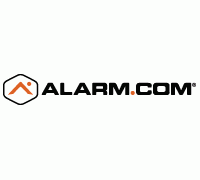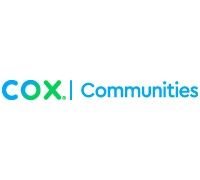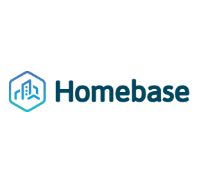AirTies Brings New Technology to the Table That Can Help Improve Wi-Fi Networks in the Home
 Özgür Yildirim, North America Business Unit EVP & General Manager at AirTies, helps explain how to vastly improve current broadband networks and data collection in the home:
Özgür Yildirim, North America Business Unit EVP & General Manager at AirTies, helps explain how to vastly improve current broadband networks and data collection in the home:
What is the most important next step to engage consumers in smart home solutions, connected entertainment services, and/or value-added services like tech support and connected health?
They must first of all add value to the existing service with new functions and whole home access. They must also of course be easy to use, fully interoperable and complement each other naturally. Above all they must incorporate strong Wi-Fi which is becoming essential for mobility and whole home coverage, with the ability to sustain full bandwidth even when there are many clients connected at a given time. For operators it is very important to have remote data collection for big data analysis, since this provides invaluable information about users’ activities. This can help improve products and also indicate what new service functions might increase “stickiness” or derive new revenues for the operator.
What is the biggest challenge your company faces in 2015?
Broadband speeds continue to go ever higher with 100+ Mbps increasingly commonplace. Operators needs ways of distributing these full speeds around the entire home wirelessly without any service degradation to support premium video and other applications that demand high QoS. At the same time the growing number of poor Wi-Fi capable clients that soak up bandwidth is increasing, accentuating the challenge of delivering whole home service at full bit rates. We have invested a lot of engineering resources in understanding Wi-Fi client behaviours in order to maximize bandwidth in home networks, but we want to make further improvements. A challenge here is to find the right set of parameters to monitor Wi-Fi in the home over the cloud. We can then analyse the data we have gathered to improve Wi-Fi performance in the home.
What is the biggest driver for the connected consumer market?
The connected and smart home is the inevitable result of progress in the whole networking domain over the last 40 years and most recently the proliferation of smart mobile devices allied with the great strides taken in local wireless performance. The smart home field will now be driven by healthcare, environmental control and security monitoring in particular.
What are the most important initiatives your company is taking in 2015?
Hybrid Mesh networks are a major focus for us to increase home network capacity further over Wi-Fi without need for any additional installation. We are also working to enable remote management of wireless client connections in the house so that operators can ensure their customers get optimum performance without having to call in for support. Then as I said, being able to collect and analyse data remotely will be a critical differentiator so we are working on that as well.
Describe your vision for the smart home and entertainment markets in 2020.
The smart home has become the first true market for the Internet of Things (IoT) with the vision of interconnecting different islands of automation, convenience or entertainment. TVs, music players and game consoles are all now connected. We already stream music today, while smart TVs and OTT devices are by definition Internet connected. This trend will continue to accelerate as cable pay TV rapidly migrates to IP and becomes Internet based. Even satellite TV, which has a highly efficient broadcast system and so will remain in place, will be heavily augmented by extra on demand extra services via the internet. By 2020 I think we will see major portions of the TV market having become unmanaged and OTT based (30%+). Content providers will by then deliver directly to the consumer.
At the same time IoT will deliver new services to the home as I have said. For this to happen and the whole home IoT market to take off, four fundamental pillars must come together:
-
There must be an always available, simple and intuitive user interface. I think this will be handled on smart phones with apps, but it remains to be seen how these will blend together. Apple, Google and various standards bodies are trying to resolve this issue.
-
The “Things” must get connected to the internet and that is where AirTies plays. The connections must be wireless, since nobody wants to run wires to connect 25 different things. The requirements of individual things will determine which wireless technology will be used for communication, with considerations such as data rate, range and power/battery operation. My bet is that various forms of Wi-Fi will make up the backbone and serve high capacity services such as IPTV and OTT plus 700MHz DSA/TV White Spaces. For low power devices Bluetooth will probably dominate in the long run due to its ubiquity, power and cost. In the short term Zigbee and Zwave are what is currently available, but may die out to avoid having to support too many wireless protocols. All of these networks must be aggregated and special performance quirks/requirements must be addressed, such as pairing, security, and latency.
-
The “Things” must be redesigned electronically to incorporate sensors, bigger processors and memory (vs $1 to $2 microcontrollers) and network interfaces.
-
Most importantly, something useful for the consumer must emerge from vertical applications and services. This is the most challenging part. Clearly there will lots of small niches that the technology enthusiast will buy, but if that is all IoT delivers then it will die. I simply do not see myself turning my house lights on and off from my iPhone. I could though see myself turning on the heater at my house on the island. Energy conservation, health care and security will probably be some of the early markets in the home, while there will be great interest in self-driving cars outside.
Özgür Yildirim will be speaking on the panel “Entertainment and the New User Experience” on Thursday, May 21 at 11:15 AM during CONNECTIONS™ in San Francisco, CA. Other speakers include representatives from Brightline, Limelight Networks, PacketVideo, and Wowza Media Systems.
For more information on CONNECTIONS™ speakers, sessions, or topics, visit www.connectionsus.com. Register to attend today!
Next: PacketVideo Creates New User Interfaces to Help Create Convenient OTT Consumption
Previous: Security: Lowing the Bar for Home Automation Adoption




 Özgür Yildirim
Özgür Yildirim










